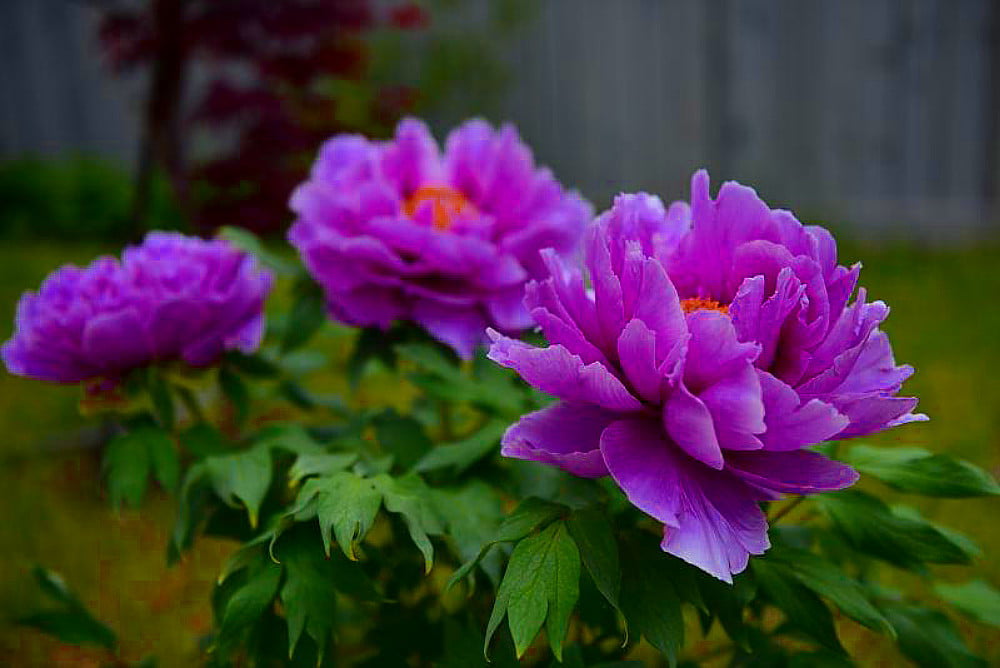

And then 257,335,738 high-quality GBS markers were detected. From the high–throughput sequencing, a total of 243.35 Gb raw data were generated. suffruticosa (‘Xin Riyuejin’) as the male parent, was used to construct the genetic linkage map using genotyping-by-sequencing (GBS) technique. ostti (‘Feng Dan’) as the female parent and P. In this study, an F1 hybrid population, derived from the cross of P. However, the genetic mechanisms controlling the traits of interest have not been extensively investigated. Tree peony (Paeonia suffruticosa Andrews.) is an important ornamental and medicinal plant in China. Our study has helped establish the flower development model in tree peony, to identify key molecular mechanisms in the development of different flower shapes, and to provide valuable information for improving the genetic diversity of tree peony and many other woody plants. We speculate that PI and AP3 may trigger the stamen petalody in tree peony. These six key genes represented all categories in the ABCDE model to verify the functions in stamen petalody. We identified six key genes based on their differential expression levels in different flower parts. PI and AP3 s howed higher expression levels of inter-petals in the stamen petalody group, compared to stamens of non-stamen petalody.Ĭonclusion: S ixteen MADS-box genes were identified in tree peony through RNA-seq. AG and SEP showed high expression level in carpels and sepals separately both in stamen petalody and non-stamen petalody groups. Six key genes were selected to verify their functions in stamen petalody. A total of 1,833 transcription factors (TFs) were identified in our study, among them 16 MADS-box genes were found and characterized. A total of 76,007 high quality unigenes were assembled and 30,505 were successfully annotated. Results: In this study, RNA sequencing was used to assemble and annotate the unigenes in tree peony to identify the critical genes related to flower parts formation and verify the key genes in different flower shapes of tree peony cultivars. However, there is limited information on the molecular mechanisms of stamen petalody and flower shape formation in tree peony. Stamen petalody has been shown to be the most effective way to modify flower shapes. They are well known and prized for their beautiful flowers in many different shapes. It is also a common ornamental shrub in Europe and North America. In conclusion, the evaluated stress-related proteins in three peony seed species by proteomic analysis quite agreed with their adaptation of heat or cold stress proteomics could also be a very useful tool for distinguishing species in the production and peony seeds may be a good source for protein production.īackground: Tree peony ( Paeonia suffruticasa ) is an economically, medicinally and ornamentally important woody flowering plant in East Asia. In addition, an optimal protocol of microwave-assisted alkali extraction was developed to produce PSP. ostii "Fengdan" seeds may be a better source for protein production than seeds of the other two species in terms of protein solubility and the content of total protein, albumin, and globulin.
#PURPLE TREE PEONY PSP#
Furthermore, PSP also showed high glucosidase inhibition activity, indicating that PSP might have some potential function for the remission of hyperglycemia.

Further protein analysis showed that the primary composition of PSP was albumin and globulin. lactiflora Pall "Hangshao" seeds, showing its potential for stress resistance. Moreover, stress-related proteins were also accumulated in P. rockii has higher content of proteins related to cold resistance, which were all highly consistent with their adaptation of heat or cold habitat. ostii "Fengdan" has heat and pathogen tolerance-related proteins, while P.

Proteomic analysis of the three species showed that P. Results showed that the intensity of protein bands in sodium dodecyl sulfate polyacrylamide gel electrophoresis (SDS-PAGE) and specific protein ID (especially for specifically expressed proteins (SEPs)) was effective to distinguish these peony seed varieties. In order to distinguish seeds varieties, describe the proteomic profiles correlated with stress tolerance, and evaluate peony seed protein (PSP) as a functional food product, we characterized the seed protein profiles of these three species and their glucosidase inhibition activities. Peony (Paeonia) has high ornamental, edible, and medicinal values.


 0 kommentar(er)
0 kommentar(er)
